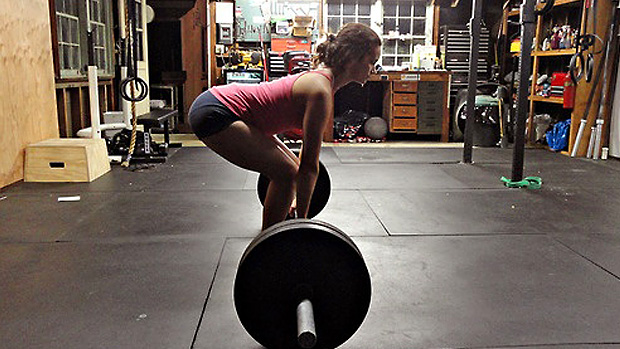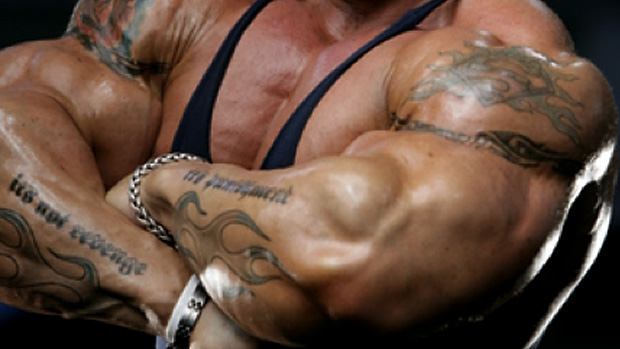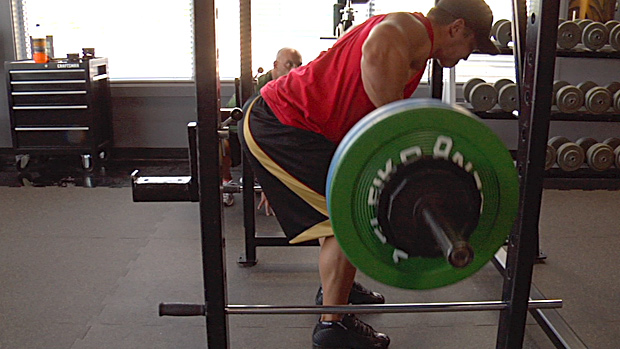Here's what you need to know...
- Detailed training journals distinguish successful athletes from beginners.
- Tracking the rate of perceived exertion will help you evaluate workouts and plan ahead.
- Use the "Orthopedic Index" to gauge the areas that give you pain. Then adjust training accordingly.
- Track volume (the amount of work you perform) and intensity (the quality of that work.)
- Workout density is the ratio of work to rest. It's the amount of minutes spent working versus resting, during the entire workout.
From Progress to Mastery
If you're wanting massive progress – from bigger lifts to bigger biceps – keeping a training log in the gym pays dividends. Everyone can do it, it's cheap, and it's the one surefire way to know whether or not you're making progress.
Recording your training is the most crucial habit that distinguishes seasoned, successful athletes from novices and hacks. And if you want to know the truth, the most successful athletes are the lifters who keep the most detailed and consistent training journals.
The Bare Bone Essentials
These are the most basic entries in a training journal:
- Date
- Exercises performed
- Amount of weight lifted
- Sets and reps
- Rest intervals between sets
- Optional: Lifting tempo
- Optional: Notes on difficulty or effort
Two Advanced Entries To Consider
1. The Orthopedic Index
Noting what hurts is a good thing. Pain tells you what to avoid and when to back off. And you can use it to your advantage by quantifying it – measuring and tracking it. Do this by using what I call the "Orthopedic Index."
When you're experiencing pain, simply note the offending joint and a number on a 1-10 scale: 1 being minimum pain, 10 being maximum possible pain. That way you can monitor and track improvement or regression, whatever the case might be.
2. Rate of Perceived Exertion
There are two possible takes on documenting RPE's for each set you perform. The first is simply for documentation purposes. In other words, it's one thing to know that you did 365 x 5, but another thing to know how difficult it felt.
The second possible application is to use RPE's as a way to plan your training. Once you've made tracking RPE a habit, you'll start to see patterns and then you can start managing them and be more specific in your training goals.
Either way, if you've never considered monitoring your RPE's, it's certainly worth investigating.

Documenting Characteristics Of The Training Load
1. Volume
Volume is the amount or quantity of work you perform per unit of time. Of all three training characteristics, volume may be the most predictive of success.
I'm someone who squats about 400 and pulls about 500 and my typical weekly volume is about 50,000 to 60,000 pounds. One of my training partners, who squats about 500 and pulls almost 600, typically racks up about 85,000 pounds of weekly volume.
So if I want to reach the numbers he's currently posting, I'll need to rack up the same amount of volume.
Now of course, there's an interesting and ultimately unknowable "chicken or the egg" question that comes up here: Is my training partner stronger than me because his volume is higher than mine? Or is his volume higher because he's stronger?
The answer is "yes" to all of the above.
While volume is absolutely critical to record for the purposes of progressive overload, so is intensity.
2. Average Intensity
Think of intensity as training quality. Even if your volume is very high, the quality of that volume must also be high or it won't lead to the results you're looking for. Consistently monitor volume as well as average intensity per set for each exercise and each workout as a whole.
Here's an example from a recent training session:
Deadlift
- Set 1: 185 pounds x 2
- Set 2: 185 pounds x 3
- Set 3: 225 pounds x 3
- Set 4: 275 pounds x 1
- Set 5: 315 pounds x 1
- Set 6: 365 pounds x 1
- Set 7: 405 pounds x 1
- Set 8: 455 pounds x 1
Notes
- Volume: 3,415 pounds
- Average Intensity: 262.69 pounds
The average intensity is calculated by dividing total volume (3415) by total reps (13).
Now, just for comparison's sake, let's look at the deadlifts I did the following week to see if I managed to push my numbers in the right direction (or not):
Deadlift
- Set 1: 35 pounds x 3
- Set 2: 135 pounds x 3
- Set 3: 135 pounds x 3
- Set 4: 225 pounds x 1
- Set 5: 275 pounds x 1
- Set 6: 315 pounds x 1
- Set 7: 365 pounds x 1
- Set 8: 405 pounds x 1
- Set 9: 440 pounds x 1
Notes
- Volume: 3,240 pounds
- Average Intensity: 216 pounds
There are a few interesting things to notice here. The first is that I hit a bigger absolute deadlift on the first session, so the most obvious takeaway is that I did better in the first session than I did in the subsequent workout.
Digging a bit deeper, you'll also see that my training volume and average intensity was higher on the first workout as well.
By tracking not only the weights you lift, but also the accrued volume and average intensity of each workout, you begin to get a more thorough and nuanced view of what you're really accomplishing.
Keep in mind, though, that efforts to increase volume usually come at the expense of intensity, especially if you're not paying careful attention to both variables.
That's why it's a good idea to always write workouts in advance so the numbers are what you want them to be beforehand. You certainly don't want to spend half of your workout on the calculator, trying to figure out a way to increase volume while at least maintaining average intensity.
If your goal is primarily aesthetic, volume should take precedence over intensity. You can stimulate muscle growth with relatively low intensities as compared to improving a quality such as maximum strength.
If you're a strength and performance athlete, you should also seek to increase training volume whenever possible, but rank intensity equally high. In other words, first ensure that intensity stays high, and then increase volume when you can.
3. Density
Density is the work/rest ratio of a workout. In other words, during a 75-minute training session, how many minutes did you spend working and how many did you spend resting?
Granted, training density probably has greater implications for bodybuilders than strength athletes, but it's still important.
What Gets Measured Gets Mastered
There's one, lesser-known but equally important reason to keep a journal. It's something called "The Missing Tile Syndrome."
When an expansive ceiling is missing a single tile, you don't notice all the perfect tiles. Your eyes go straight to that single missing tile. In other words, the default position of the human mind is to notice (and remember) the negatives in life.
If you don't take active measures to document the positives, you're much less likely to be aware of them or remember them. If you work hard in the gym, good things will invariably happen, so why not record and acknowledge them in a log?





